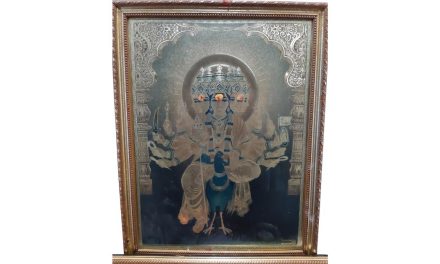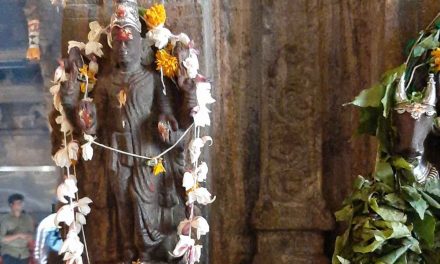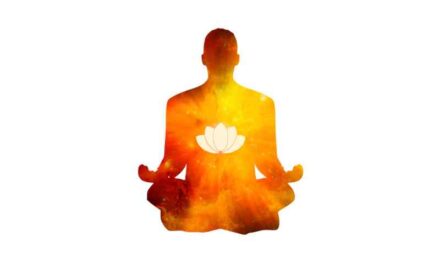The Atman (Soul) is the living one. More specifically, it is the Inner Self or the Everlasting Self that, according to the Vedas, is present in all things, from the greatest to the lowest. The Upanishads define Atman as immortal, blissful, transcendental, indestructible, spiritual, pure, limitless, wise. It is also the real self but is susceptible to the impurities and alterations of Existence.

Because of them, people can not know their own Selves and stay deluded and unaware. Atman is the heart or the nature of everything. Ego is the exterior case or cover from which creatures establish their personality and distinguishing features.
According to the Vedas, understanding the inner self is the highest aim of human existence, which contributes to freedom from the process of creation and death.
The following essays shed considerable light on the fundamental essence and meaning of Atman and why it is vital to meditate on the Self in order to calm the mind and become lost in the Body.
Atman is a Sanskrit word that may be described as an individual’s true self, spirit, or soul in its most basic definition. For Hindu philosophy, especially in its Vedantic tradition, the notion of Atman (the real self) is regarded as the first and most important principle.
The Concept of the Atman
The Atman (Soul) is the divine component of our physical life, the real self, which is concealed in every entity of development, including the human being. It is the microcosm that reflects the macrocosm in each one of us, imparting to us spiritual virtues and opportunities, and granting us awareness and purpose to live and feel the pains and pleasures of earthly existence.
Atman is Brahman Himself, the very Being that descends through the elements of Nature by being-projection or representation and engages individually in the game of self-induced delusion and utter joy. But bound by the senses and constrained by the ego, connection, duality, and perceptual intelligence, we, the jivas, do not perceive reality.
We go out, get interested, and overlook who we are in the end. It’s like a human who journeys to distant lands under a spell and forgets his origins, his heritage, and his homeland.
Atman is the invisible companion
You never peek in as you glance about. When you are actively interested in the environment, you lack self-awareness and get lost in the job at hand. It’s how Nature has built your mind and body to hold you attached.
“The non-existent Lord invaded the senses to make them transform outward. Therefore, we gaze to the outside universe and see not the Non with us.” The Soul is the invisible companion of all our actions and encounters, the creator and the indweller of all the incarnated creatures.
The essence can not be properly clarified or represented in the human language since it is outside the senses and the mind. “There the eyes can not travel, nor speech, nor mind. Nor do we know how to explain it to the disciples. It is different from the known and beyond the unknown.”
It can only be experienced when all sensory activity ceases to have an impact on the mind when the mind itself is freed from the movement of thought and sense objects, and from the torment of desires, which are the primary cause of all human beings.
The awareness of the Self emerges, “When the consciousness and the five senses are still and the brain is still they claim that Yoga is the total stillness in which one reaches the condition of Oneness.”
Atman has no physical or mental dimension
While represented as a light, the size of the thumb, which is supposed to occur physically between the eyes, or psychically in the center, its exact position is unknown. It has no physical or mental dimension as well but is a pure representation or understanding of the mind’s intellect.
But unquestionably He remains, and He alone is real. Anything else is fake, or an idea that withers away, crushed by the weight of sins, the deterioration of the earth, and the burden of time.
We are instructed, “The Adorable One resides in the heart and governs the air of creation. Even the senses pay respect to Him. If He steps out of the body in liberation from the chains of the flesh, what else remains? This Being is Supreme.”
We are often instructed, “The soul is beyond the senses, the brain above the spirit, the conscience beyond the conscience, and the unmanifested cause above the Brahman. Whereas the basis of Atman is truth, permanence, and happiness, the essence of the ego is delusion, impermanence, and pain.
The conscience of a human entity is forever saturated in despair and misery, and the indwelling Atman wants to be saved from everlasting destruction and damnation. The ego is a distorted representation of this.
Katha Upanishad describes the relative position of the two selfs in this manner, “There are two self’s, the independent ego and the indivisible Atman. As one grows above me, me and mine, Atman shows Himself as the true Self.”
Atman described in the Mundaka & Kena Upanishad
The Mundaka Upanishad is more explicit and poetic, “Like two birds perched on the same tree, intimate friends, the ego and the self dwell in the same body. The former eats the sweet and sour fruits of life, while the latter looks with detachment.”
This symbolism is further extended in this verse of the Katha Upanishad, “Know the Self as the Lord of the Chariot, the body as the chariot itself, the budding bud.
“Here, no eye can penetrate, no speech, no spirit. Neither do we know whether to grasp or preach it.” Throughout the Kena Upanishad, the instructor describes the challenge of understanding the Self to the students in the following terms, “If you believe you know the Self you don’t know.” And the student says, “I don’t think I know the Self, nor can I claim I don’t recognize Him.”
The problem is further explained in the Kena Upanishad, and the way to reach the Atman (Soul) is also suggested, “The ignorant one thinks that the intellect can know the Self, but the enlightened one knows that He is beyond the duality of the knower and the known.” Thus, intelligence can give you wisdom and discernment and pave the way, but it can not give you the experience of the pure Self.
The concept that is inferred or indicated in the Upanishads is that Atman can not be understood by ordinary consciousness, when the senses are involved, and when the mind is dysfunctional, and buddhi, intellect, is under the control of impulses, delusions, and duality.
Which interfere with the cycle of understanding and discerning reality and the correct wisdom. There can be no knowledge of the Atman (Soul) while there is a gap of “knowing” between the knower and the learned. He who knows it (as an object) doesn’t really know it.
Mind and the senses
The mind and the senses are between the two polarities of the knower and the understood, or the subject and the object. We keep the being from recognizing and understanding Atman as his own Self. The subconscious is an incomplete device with the intrinsic failure of Atman to grasp and distinguish.
“The essence of the Self can not come to him, who has not recognized that he is the Self. His intellect can not disclose the Self to him, outside his duality of subject and object.” How can one know the Atman (Soul)? Which is the answer or the mechanism that renders Atman self-evident? The Upanishads are rather simple.
The True Self
“The self can not be identified to a person who does not refrain himself from wrong ways, who does not regulate his senses and holds his mind, and who does not practice meditation or abstinence,” Yama describes to Nachiketa in Katha Upanishad.
He also says, “This enlightenment that you have learned may not come from rationality and education, but from near interaction with a recognized instructor.” Nevertheless, a pure connection with a spiritual leader will not be quite beneficial when there is an inner and profound devotion and desire to learn the transcendental Self, the Atman (Soul).
“The Self can not be understood through the analysis of the Bible, not by intelligence, nor by educated discourses. Only those who desire the Self will obtain the Self. However, the Self shows itself to them.” Establishing a relationship between the outer and the inner realms is neither simple nor clear and straightforward.
One must progress through several intermediate phases and levels, conquer several barriers, eliminate many impurities, mute many noises of mind and body, eradicate unfavorable attributes and destructive behaviors to achieve the final target.
The Self is immune to the perception of conditions in the physical realm. The Mandukya Upanishad teaches us that the soul is fourfold: the waking Vaishwanara, the Supreme Male (the ego), the sleeping Taijasa, the enjoyer of the intangible artifacts and the God of the luminous spirit, (the astral), the enigmatic Prajna, the one who resides in deep sleep and who is the God of Knowledge Atman, the infinite, the incommunicable, the origin of the world, and really Brahman is.
Universal realities and planes of awareness
We travel through these four states every day, so we don’t realize who we truly are, even like we confuse the ego for the Self. Our minds have little integrity or power to learn transcendental realities or the fundamental realities of our own life outside our empirical knowledge.
The inner path is challenging and enigmatic, and we are insufficiently prepared to distinguish the existence of the Spirit inside us or its limitless realities. There may also be other universal realities and planes of awareness between our waking and deep sleeping states, which we will never learn.
But nothing can be done regarding the true understanding of self-knowledge? What’s going to happen when a seeker gets there? No one appears to recognize or explain explicitly what occurs when an individual falls into union with the Self or Brahman. By the knowledge of many, we realize that the state of self-realization is outside the capacities of the human mind.
And can not be adequately converted into any human language, because terms that belong to the realm of the conditioned mind do not hold the force or the luminosity of transcendental realities. Mysticism itself is a vague area, and mystical encounters are much more of a mystery.
Around the same moment, we realize that deep in the recesses of our own minds there is a tangible mystery. We realize it’s there because we can sense its existence in a deep moment.
We realize that we are different because we are quiet and profoundly contemplative. And for all the obstacles that the universe provides, the joy of the Self can not be kept indefinitely in the hidden caves of the head.
In the vast phases of the spirit, in the sumptuous phases and sublime moments where you feel linked to the universe or Existence, and in times of immense distress where you feel lonely or powerless, the happiness and passion of the soul flood through your waking consciousness like the thundering sounds of a wild river and awaken you to the reality of the Self.
Soul who is the everlasting witness
Therefore, the Atman (Soul) who is the everlasting witness does not fully forsake you. If you excel in reflecting the best of human existence if you have kindness, affection, empathy, and equanimity, and if you conquer the forces of your own subconscious, you can gradually feel linked to him and see the universe through his eyes.
You will still require the help of God in the path towards self-knowledge. In Isa Upanishad, we see an ambiguous reference to it when the seeker prays to Brahman in the following terms, indicating the value of devotion.
“The face of reality is concealed behind the golden cover, O Pusan, may you lift the lid so that I may see the golden Reality!” As the appeal is rendered and the Truth that he was searching reveals itself, he draws an undisputed conclusion in a state of ecstasy and exclaims, “In fact I am He.” Self is the greatest mystery of human existence.
Understanding this is the ultimate aim that a human may be expected to accomplish after multiple births by gaining great merit. In him, the process of life completes its full circle as it finds the Reality that is concealed behind the golden shield.
Although people suffer and fail in the mortal universe with abstract yearnings and unfulfilled wishes, a handful manages to create the nearly unlikely vision of realizing who they are. And the planet is worshipping them.
Useful blogs to read:
Disclosure: “Bear in mind that some of the links in this post are affiliate links and if you go through them to make a purchase I will earn a commission. Purchasing via an affiliate link does not cost you any extra, and I only recommend products and services I trust. It helps me support the blog/channel/group to make quality content and recommend products for you.“





